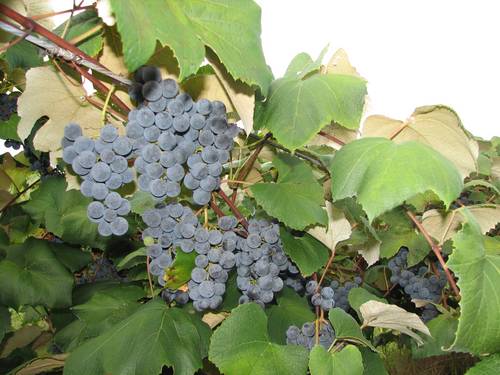Interactions and Sustainability
Vitis labrusca could never survive without all of the other organisms surrounding it. Even the seemingly disadvantageous interactions shed a positive light on the hardy fox grape.
The most obvious ways in which Vitis labrusca interacts with other organisms is that it provides oxygen and food for animals. Many birds and small mammals, like squirrels and foxes, will enjoy the sweet fruit when it is ripe. Some insects also enjoy munching on the leaves of the grapevine.
Another important interaction is one between the roots of Vitis labrusca and mycorrhizae. The fungus shares the nutrients it extracts from the soil. It is very difficult for any plant to get enough nutrients without this fungus growing in its roots. In return, the fox grape shares the carbon-based sugars it makes from going through photosynthesis. It is amazing that one fungus can be so helpful to the plant while others (gray mold and powdery mildew) can be so harmful.
The interaction between yeast and the grapes are also important in making wine.
As seen in the Adaptation page, Vitis labrusca has managed to thwart the attempts of many insects and diseases to take advantage of its resources. Although it seems like it would be easier on Vitis labrusca to not have to fight off all sorts diseases and pests, they have only made Vitis labrusca a hardier plant that will most likely be the go-to variety for grape growers if any crippling infestations or outbreaks occur. Vitis labrusca can either be grown as a true native American grape, or be used to make highly successful hybrids of other well-liked types of grapes. Either way, interactions and the resulting adaptations to pests such as the root louse, Japanese beetle, powdery mildew, and gray mold has greatly benefited all the organisms that like to munch on the sweet and juicy grape.



